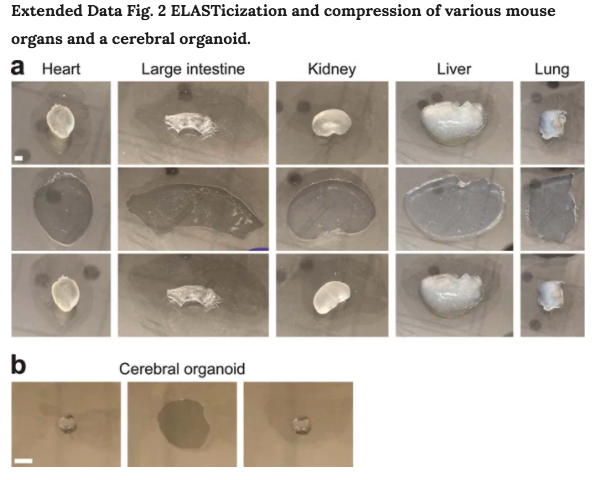Scientists Found a Way to Make Brain Tissue Indestructible

At the Massachusetts Institute of Technology, scientists have developed a new technique that can transform tissue samples into flexible surfaces.
That way, lab techs can stretch out the samples and label them more easily for further examination.
The research team believes this technology could one day help usher in the most comprehensive map of the human brain yet.
Superhero-like stretching capabilities aren't just for Elastigirl. Researchers at the Massachusetts Institute of Technology have come up with a new technology that can make any tissue sample exceptionally flexible.
ELAST technology (Entangled Link-Augmented Stretchable Tissue-hydrogel) is a chemical process that makes tissue samples very thin, very stretchy, compressible, and borderline indestructible. With it, lab technicians can more quickly and easily conduct fluorescent labeling in cells, proteins, or other genetic materials within organs like the brain or lungs. That, in turn, could enable faster research discoveries.
The MIT researchers published their work last month in the journal Nature Methods.
Kwanghun Chung, an associate professor of chemical engineering at MIT, developed the new process while working on a complex project five years in the making: building the most comprehensive map to date of the the human brain.
To realize that model, Chung needs to label and scan each and every fine cellular and molecular detail in even the thickest slabs of brain tissue, in order to preserve its three-dimensional structure. The lab must also be able to preserve these samples for years, as they go through various rounds of labeling.
"When people donate their brain, it is like they are donating a library," Chung says in a prepared statement. "Each one contains a library worth of information. You cannot access all the books in the library at the same time. We have to repeatedly be able to access the library without damaging it. Each of these brains is an extremely precious resource."
Engineering ELAST meant settling on the ideal formulation for a gel-like chemical called polyacrylamide. The beauty industry actually uses this polymer as a stabilizer and binder in lotions and other cosmetics. In Chung's new version, there's a high concentration of acrylamide, which results in a tangled set of long polymer chains with links that slip and slide around.

That gives the gel structural integrity, but also loads of flexibility. So when the gel is applied, cells and molecules of the tissue in question are trapped inside the web of polymer chains. In turn, the sample can withstand stretching and squashing, without fear of tearing.
In their study, the scientists say they can stretch out human and mouse brain tissues to twice their width and length. Or they can compress the brain tissue to one tenth of its original thickness with no residual distortion afterward.
"These results demonstrate that ELAST enables fully reversible tissue shape transformation while preserving structural and molecular information in the tissue," the scientists note in their paper.
It can take up to 21 days for the tissues to fuse together with the polyacrylamide gel, achieving full flexibility, but the payoff is vast: lab technicians can label cells much more quickly while stretching the tissue out.
In one case study, the team compressed a 5-millimeter-thick cross section of a human brain, needing only 24 hours to label the entire sample. Back in 2013, Chung and company took the same amount of time to label a section that's 1/10 the thickness of that sample.
You Might Also Like

 Yahoo Sports
Yahoo Sports 